- Home
- Richard Adams
The Day Gone By Page 13
The Day Gone By Read online
Page 13
Becoming literate was also part of growing up. I can’t remember any particular moment when I realized that I could read – read anything I wanted to and read for pleasure. Nor can I recall any particular book as being the first I read. Nevertheless, before I was eight I had become a passionate reader. This was better than having to go to parties and getting into trouble for saying the wrong thing: better than the uncontrollable world of real people and their crushing remarks which often hurt so much more than they can have been meant to. A printed story was predicted. It was there, in the book, and my pleasurable task was simply to follow it, to experience it as though it were real, to seek it out to the end. Poetry was also predicted, but here there was the added delight of memorability. If you read a poem often enough, it stuck in your mind. The sound, the metre and the mood they generated were what came across to me. The meaning — the real meaning — often escaped me: it didn’t matter. For example, a poem I discovered for myself and have more or less had on board ever since is Thomas Hardy’s ‘Friends Beyond’. The mood - and, unconsciously, the effect of the metre — seemed to me, at that age, kindly and reassuring. These nice, dead people were still around, talking to Thomas Hardy and not in the least frightening. The characteristic Hardyesque irony completely passed me by. But no doubt it would pass by any young child.
Reading was highly reassuring. It was the perfect escape - into other worlds which often seemed more valid and valuable than the real one. And no one found fault with you or blamed you for it: no, they were pleased to see you reading. And the thing that happened in books didn’t evanesce, like last Christmas or yesterday’s picnic. They stayed put, to become familiar, to be re-experienced as often as you wanted; and as they were dwelt on they grew in grace and power. Jim Hawkins was for ever and ever poised on the cross-trees. ‘One more step, Mr Hands, and I’ll blow your brains out!’ That stuck all right. Or the Artful Dodger sidled across the road to the exhausted Oliver. ‘Hullo! my covey, what’s the row?’ (The Dodger’s dialogue throughout, culminating in his glorious appearance before the magistrates, has been a resource and solace to me for years. But again, the pathos of the Dodger’s braggadocio escapes a child.) The permanence of books and the memorability of dialogue are well up among the most supportive things I have ever found. Becoming literate put me in possession of a new expanse, constituting a better bolt-hole than I could have dreamt of; far better than being behind the bedroom door at the Punch and Judy party. Words, and my own imagination, could open wider prospects and make the world more lucid and vivid - yes, and enjoyable - than I had known to be possible. Years later, when I was grown-up and living in Islington, I was privileged to pass this lot on to a friend, an East End boy. ‘I never knew there were such books,’ he said to me.
But there was a reverse side. I came upon it, of course, unaware: I couldn’t have foreseen it. Stories and poems reflect all aspects of human experience, not just the pleasant ones. They include grief and fear. It didn’t take long to discover that books could upset you a great deal. What was the first to do so? I don’t know - I can’t remember. Perhaps it may have been the heroic, self-sacrificing death of Elzevir Block (after years of undeserved imprisonment) at the end of Moonfleet. Ernest Thompson Seton was liable to upset you passim, without any warning at all. Scotty the hunter killed Krag, the Kootenay Ram. Raggylug’s mother was pursued onto the ice, fell through it and drowned. The nest-building sparrow hanged itself in a loop of horsehair. Uncle Remus’s stories of Brer Rabbit were usually delightful (I loved the dialect - reading it so as to hear it in my head), but did Brer Rabbit really murder Brer Wolf by pouring boiling water on him through holes bored in the lid of a chest?
Uncle Tom’s Cabin was the book which upset me to the point of something approaching a small nervous breakdown. I can’t recall now how the book came into my hands, but certainly no one in the family foresaw that it was going to have such a devastating effect on me. A child takes everything at face value and has no discrimination or standards of comparison. For what it was worth, I knew that Uncle Tom’s Cabin was a book that had been read and taken seriously by enormous numbers of grown-up people, and that it had been influential in bringing black slavery to an end. I wanted to know what it could all be about. Obviously, this was a great book and something I was going to enjoy reading. It turned out a quite unexpected disclosure, a journey to levels of grief which I had never imagined. People laugh at little Eva now: she has become a symbol representing the worst kind of Victorian sentimental mush. A child, absorbed in the story, cannot see her in this way and has no mental equipment with which to criticize Mrs Beecher Stowe’s outlook and narrative style. I found Eva’s relationship with Topsy entirely convincing and unlike anything I had ever come across elsewhere. Eva’s death came as a bad shock. It had never occurred to me that children died, and in trying to talk about it I didn’t get much reciprocity from the parents of poor Robert. I had to weep and wonder almost by myself; although the housemaid, kind girl, was comforting.
There was worse to come. Simon Legree, his dreadful plantation and his two black torturers Sambo and Quimbo have never really left me. In an odd way it was all worse because I couldn’t understand about Cassie. Why was she there? If I couldn’t understand about Cassie, perhaps there were other, more upsetting things that I couldn’t understand. But I understood all right about Uncle Tom, and I believed every word of it. I’m afraid I must have been a bit of a trial to the family for a day or two at least. To someone who tried to comfort me by saying ‘It didn’t really happen’, I answered ‘No, but I bet something like it did.’ I had, after all, in effect been told that that was so.
Many years later, when I came to write Shardik, I found that the inexorable course of the story compelled me to create the character of Genshed. He had to be the most wicked, cruel man I could devise. Meditating, I concluded that in fiction there were really two kinds of wicked man: a rich wicked man, like Grandison in Daniel Deronda; that is to say, a man rich enough to be wicked without being physically violent. And a poor wicked man, like Mr Squeers. Genshed was deliberately modelled on Simon Legree, except, of course, that his victims were not blacks but children. The critic Edward Blishen, writing about Shardik, showed himself under the curious misapprehension that it was meant to be read by children, and accordingly warned all his readers not to let any child come near it. Well, I underwent Simon Legree as a child and, whatever the sentimentality of Harriet Beecher Stowe, he has remained with me these sixty years. Yet as a child it was less horror of Simon Legree which obsessed me than grief for Uncle Tom.
If you come to think about it, the relative naivete and narrative simplicity of Mrs Beecher Stowe’s approach to the reader were essential to my absorption and my passionate feelings of grief. I was eight years old: if it had been King Lear or Jude the Obscure I wouldn’t have been able to take it in.
Worse than the grief emanating from stories and poetry was fear. Grief at least let you remain yourself, but fear could drive you distraught. I remember in particular one summer evening. I had gone to bed as usual, but was nowadays allowed to read until I was ready to lie down and go to sleep. I was reading the ghost stories of Algernon Blackwood (the books mostly came from my sister, who was generous in lending them and often left me simply to help myself from her shelves) and began upon ‘Ancient Sorceries’. I don’t know how long I took to finish it; an hour perhaps. In the twilight the sinister, mysterious silence of the isolated little French town intensified round me and the people – the landlady, her daughter and the others - the people who turned into cats at night, came slinking into the tail of the eye and vanished, sometimes posturing, sometimes gliding round corners, never disclosing exactly what their menace was. That I did not really understand what I was reading about - witchcraft - if anything made the fear worse. It was something bad, something malign. Somewhere at the bottom of it was the Devil. At the top of it were the trance-like silence - à cause du sommeil et à cause des chats (I could work out what that meant, near enoug
h) – and the half-seen, sidling cats. Conscientiously trying to go to sleep, I lay sweating, every now and then starting up with terror in my own familiar bedroom. I don’t know why I didn’t go downstairs to seek comfort. No one would have been cross: I would have been met with kindness. Yet somehow I remained there, helpless in the fantasy of the still town and the gathering cats.
A curious feature of all this is that in the story the witches – the cats – are not actually seeking to harm or physically to hurt the English visitor to their town. Their aim is to seduce him, to make him one of themselves; to effect, in some strange way, his transit into their world of the fifteenth century. It is rather the atmosphere of seclusion and mounting peril – the feeling of being helpless in a whirlpool - which is so terrifying. When my mother came up to bed, I suppose about quarter past ten, I was in a sorry state. She, however, was completely reassuring; she always was. Simply by her presence and her own natural separation from and sensible immunity to all such things, she could disperse the spectres and restore the senses to their proper command. The fear simply went away and, although it sometimes troubled me later, when I was alone, it gradually diminished and became diluted until I could cope with it.
Cruelty was upsetting in a different way. I have since learned that, setting aside all question of morals, conscience and what we would like to believe we think, we are all by disposition either sadistic or masochistic. That is, we identify naturally either with the tormentor or the victim. I identified with the victim, and how. In those days, the late nineteen-twenties and early ‘thirties, only a handful of scoffed-at innovators knew anything about Freud and his world-changing discoveries. Nobody connected cruelty with sexual excitement. On reflection, this is surely an extraordinary state of affairs. What I am trying to explain is that in those days, incredible as it may seem to younger people today, sexual fantasies and imaginings were regarded as morally worse and much more unmentionable than cruelty. Sexual things simply ‘didn’t exist’. People pretended they hadn’t heard you. You might acquire a bad reputation and people would drop you: I have known boys to whom it happened. Yet you could talk without causing embarrassment about cruelty - for instance, the well at Cawnpore in the Indian Mutiny. You couldn’t talk about sex. The safety curtain fell immediately, like a portcullis.
What I am calling an extraordinary state of affairs is that this condition of the collective mind had brought about a strange moral inversion. I assume that most people today would agree that it is natural and harmless for people to entertain sexual thoughts - we all do, anyway - but that the idea of dwelling on cruelty is disagreeable; we wouldn’t like to think that anyone we loved was prone to this. If it had been suggested to people in the nineteen-twenties that writing or talking about cruelty was at all connected with sex, they would have denied it vigorously and the person who suggested it would have been ‘cut’. If they had actually come to believe it, they would have been overcome with mortification, because to them the idea of sex was far more embarrassing than the idea of cruelty. This seems strange now, but it was so: and consequently the whole nature of society was different.
In those days cruel but never explicitly sexual fantasies, bad enough to trouble any reasonably sensitive person, were a common feature of popular fiction. (As a matter of fact, there are some nasty and quite unnecessary things in Humphry Clinker, come to that; but in those days I hadn’t read Humphry Clinker.) I was upset by things in R. M. Ballantyne, in H. G. Wells and in Conan Doyle, the last of whom, I still think, possessed a foully sadistic imagination. ‘Sapper’, too - a very popular writer of those days - can’t be exonerated. And these writers were imitated in that regard by the lesser people who wrote for boys’ magazines. Indeed, a certain amount of cruelty seemed almost obligatory in boys’ magazine fiction, and often there was no mistaking the note of relish. People in those days not only knew nothing of sadism: they were also ignorant of the relevance and validity of fantasy to the psyche and to real life. Dreams were all rubbish, and fantasy was what Jung sardonically called ‘nothing but’: that is, a thing on its own, unconnected with the personality of the fantasist.
A lot of the nastiness just ran off the reader harmlessly. Most little boys aren’t easily upset, and rubbish, being rubbish, soon evaporates. But when an author writes memorably and is himself as good as mad, like Edgar Allan Poe, it is another matter. Of course, I had no business to be reading Edgar Allan Poe at my age. It should have been kept from me. But my father was by temperament disinclined to interfere or put his foot down - what he lacked, as Mr Gibson had as good as said, was self-assertion - while my mother, though kind and understanding when you were troubled, didn’t read books much and was not really conscious of them as influential and in certain ways larger than life. Little by little, I was becoming a compulsive reader, perhaps a trifle escapist, my rudimentary notions of self-respect to a certain extent tied up with reading. If a book enjoyed a high reputation, that was enough to make me feel that I at any rate hoped to read it. Sometimes I had to admit myself baffled. I could read Oliver Twist, Nicholas Nickleby and The Old Curiosity Shop, but I was defeated by Dombey and Son and A Tale of Two Cities.
Edgar Allan Poe gave me, as they say, the screaming hab-dabs. Were there really people like the man in ‘The Black Cat’? I knew there were not - nor any like Montresor in ‘The Cask of Amontillado’. These were creatures of a horrible fancy. But the force and credibility of Poe’s narrative style reft you out of your world into his and held you gripped there. You had to read on. There is a deliberation and an absence of haste about Poe – some people might even say he is long-winded – which, if you are a submissive and conscientious reader, slowly enmeshes you and leads you step by step to the catastrophe. The trouble was that he wasn’t pretending, like M. R. James. I felt that he himself believed every word of what he wrote. And even when the ‘goodies’ won, as in ‘Hopfrog’, the denouement was so terrible as to leave me unnerved.
However, not all my reading (I’m glad to say) was as unsuitably advanced for my age as this; for a lot of the time I read undemanding stuff - honest tripe. The most enjoyable and memorable of these lighter books had been published during the first two decades of the century - before I was born: once again, they came from my sister. I wonder whether anyone reads them now. I fear not, for they are long out of print (in their beautiful, hardback, illustrated editions) and today children’s books have become an industry: no one reads yesterday’s much. But surely W. M. Letts’s The Story Spinner would be worth reprinting? I still have my sister’s copy of Why-Why and Tom-Cat, written under the nom-de-plume of ‘Brown Linnet’, and I hope my grandchildren are going to enjoy it as much as I did. Madeleine Nightingale’s Tony O’Dreams has charm and humour, although as you get older you can’t help but perceive its sugary sentimentality. Still, Little Lord Fauntleroy has plenty of that, and children still read it. They read Frances Hodgson Burnett’s The Secret Garden, too.
Our edition of Edward Lear was the one illustrated by Leslie Brooke, and I don’t think there could be a better. I still love the pictures. My mother used to read it to me (the actual title is Nonsense Songs and the publisher was Warne), and naturally it wasn’t long before most of it had soaked in and I had it by heart. I can still run through ‘The Jumblies’, ‘The Dong’ or ‘Uncle Arly’ if I can’t go to sleep. It’s extraordinary how moving and memorable they are.
I have already mentioned my father reading Dr Dolittle to me. I understand that the Dolittle books are currently out of favour, on account, apparently, of the character of Prince Bumpo. It seems a pity to set aside a canon of some nine or ten books — though of varying quality, the last four being of little account, I reckon — which have a lot of merit and remain very readable to and by children. Their strongest characteristic, I think, is their buoyant optimism, even though this is often sentimental. For example, when the Doctor, Bumpo and Long Arrow defend Popsipetal against the Bagjagderags, apparently no one gets killed. Nevertheless, the books have consistency and in
tegrity: they are nowhere false Sentimental they may be, but they possess a decency and rectitude of their own, despite the lack of any spiritual dimension. And there is nothing amiss with the Doctor’s passionate concern about the abuse of animals. He turned me against circuses, fur coats and other such evil things - for life.
Some of the most popular light reading for children during the ’twenties and early ’thirties were the William books of Richmal Crompton. The only thing wrong with William is that he went on too long; up to the Second World War, into it and beyond. He was overtaken by a changing world. He ceased to be what he had begun as — an amusing, topical, satirical and at times even damaging reflection of the ’twenties, the days of short skirts, motor-bikes and Oxford bags, bobbed hair and long cigarette holders. Ah, and the tramps, whom everyone feared and too few pitied; the disguised Bolshevik spies; the local amateur dramatic societies, and the Seaside, and spiritualism, and the earnest ladies and the Band of Hope! This is what gave the early William books their authenticity and their sting. William himself, of course, was a gratefully received anti-hero, in the spirit of the times. The great thing was that he was no prig. Of all things he detested a prig. I have, in the past, said in print that William - dirty, sceptical, cunning and ill-spoken - was a much-needed antithesis to Christopher Robin, but if this was so, it cannot have been deliberate, for the first William book came out in 1922 and When We Were Very Young did not appear until 1924. No, I think the irritation that created William and ensured his popular success goes back not only to Little Lord Fauntleroy, but also to the whole notion - late Victorian and persisting well into the twentieth century — of children as beautiful, innocent little creatures, whose charming world must not be touched with the rough hand of grown-up reality. Lewis Carroll had a gentle go at this in the Alice books: for example, Alice, called upon by the Caterpillar to recite ‘You are old, Father William’, comes up with a brilliant parody which has eclipsed the original. Yet Carroll himself, as he shows clearly, remained a member of the ‘fairy creatures’ school. Sylvie and Bruno is not easy to swallow nowadays. If Richmal Crompton was consciously reacting against anyone, it was probably Rose Fyleman (‘There are Fairies at the Bottom of our Garden’) and certain others like my Madeleine Nightingale, whose Tony O’Dreams is very starry-eyed and chivalrous.

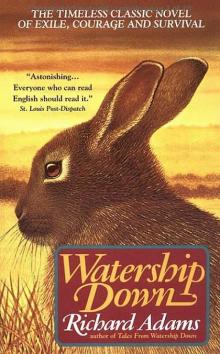 Watership Down
Watership Down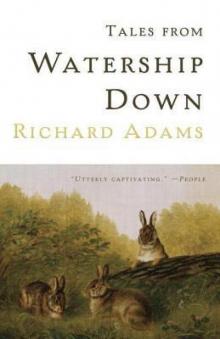 Tales From Watership Down
Tales From Watership Down Maia
Maia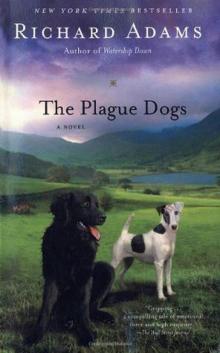 The Plague Dogs
The Plague Dogs Shardik
Shardik Traveller
Traveller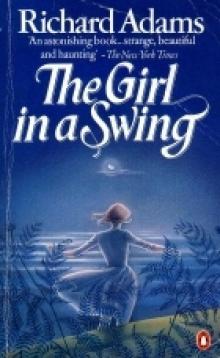 The Girl in a Swing
The Girl in a Swing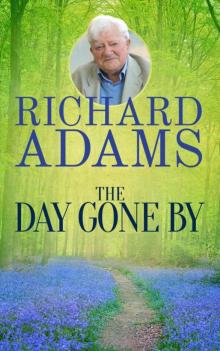 The Day Gone By
The Day Gone By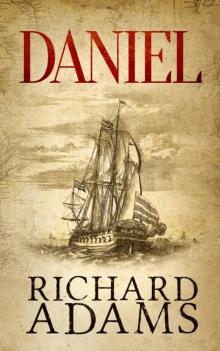 Daniel
Daniel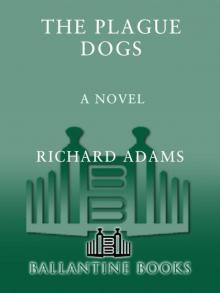 The Plague Dogs: A Novel
The Plague Dogs: A Novel